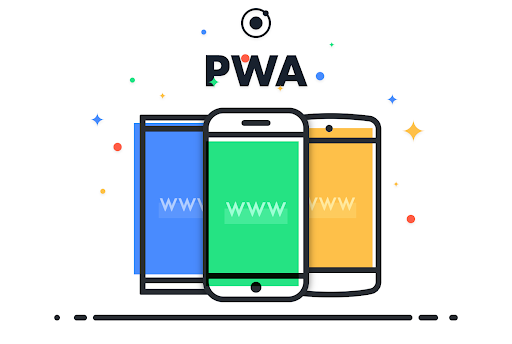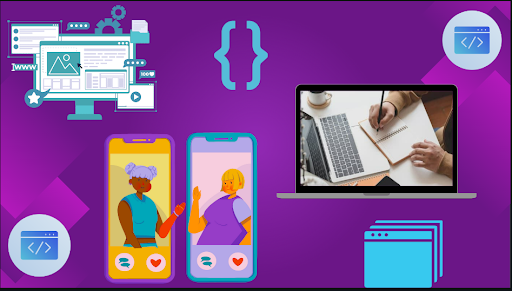In our fast-paced, digital-driven world, users want a seamless, fast, and reliable mobile experience. This has caused businesses to rethink their mobile strategy, and customer expectation has helped establish a new mobile application model called Progressive Web Apps (PWAs). PWAs combine the best features of both web and native apps’ functionality, and they have quickly developed a foothold in the mobile app ecosystem by providing an improved user experience and service. So, what are PWAs and how do they influence the user modality of mobile app interaction? Let’s dive in.
What Are Progressive Web Apps (PWAs)?
A Progressive Web App (PWA) is an application software distributed across the web and is intended to function on any platform that utilizes a standards-compliant browser. Rather than requiring traditional downloads from app stores—like mobile apps—PWAs run in your browser. PWAs welcome an experience that feels and functions like an app, while being faster and more lightweight than native apps, and without needing to install. This is equivalent to the bridge between mobile websites and native apps, providing the best of both worlds.

PWAs present several important features
1. Fast Load Times:
PWAs are built for performance, so they load quickly—even with slow internet connections. PWAs load quickly because they utilize caching to load parts of the app, rather than constantly fetching new data from the server.
2. Offline Capability:
Perhaps the most exciting feature in the PWA space is offline capability. Utilizing service workers, PWAs cache and store files or data necessary to allow users to continue using or participating in aspects of the app, while offline.
3. App-Like Interface/Experience:
PWAs offer the benefits of an app interface as well as the growing, mature experience users expect from modern technology. They include updating behaviors that flow smoothly from page to page, revisiting aspects of the app, and responsive design. Users access a PWA in the browser, but can still add the app to their home screen to create the semblance of an app experience on their mobile devices.
4. Cross-Platform Use:
PWAs offer run-time across devices and platforms, meaning mobile, tablet, or desktop async/sync data access. Whether using Android, iOS, or desktop—PWAs function consistently for all users.
5. Push Notifications:
PWAs provide businesses access to engage returning users through push notifications, interspersed in reading, papers, or screen refresh methods. PWAs provide similar experience push notifications to mobile apps, and these notifications can better inform users of offers or statuses for specific use cases or sat use cases by target audience, etc.

How PWAs are Impacting the Mobile Experience
1. No Installation Needs
With a native app, customers typically need to go to an app store, download the app, and then install it before using it. The whole process takes time, sometimes as long as several minutes. With a PWA, that is not necessary. PWAs can be launched instantly in the browser without excessive installation processes. Furthermore, PWAs can be added to the home screen like an app for easier access without the download or storage headaches often seen with native apps.
2. Performance
PWAs are designed for performance and speed. One major aspect of that design is a cached experience that relies less on the network. In many applications, that brings speed especially when apps often do not have to wait for data from the network. In areas with poor connectivity, this is particularly helpful, and can open up the number of users.
3. User Engagement
PWAs can create engagement by leveraging push notifications directly to the user’s device. Customers can get alerts or reminders from a business encouraging them to utilize the PWA. Businesses can increase user engagement utilizing the push notifications. Push notifications can help retain users and increase conversions.
4. Cost to Build
Building native apps for iOS and Android can take a long time to build and be expensive. PWAs allow businesses to build an application cost-effectively once- on web and leverage across all devices. Fewer resources are needed over time to maintain and maintain the cross-platforms, so businesses ultimately save money in terms of resources.
5. Access to Customers
Since PWAs run in a browser, warnings to web based businesses tap into all users who have a modern device. Companies can reach customers across platforms more easily than doing the same with native applications. This is a major benefit over native apps.

Why Businesses Are Embracing PWAs
More businesses are realizing the benefits of PWAs and adopting this technology for their mobile strategies. Companies like Twitter, Pinterest, and Forbes have already seen significant increases in user engagement and performance metrics after switching to PWAs. This trend is expected to grow as more businesses discover the advantages of PWAs in delivering enhanced user experiences at a fraction of the cost of traditional apps.
The Future of Mobile with PWAs
The future of mobile experiences is leaning heavily towards PWAs. As mobile web usage continues to rise, PWAs provide a scalable, high-performance solution for businesses looking to improve user engagement, increase conversion rates, and reduce development costs. With their ability to combine the best of web and native app features, PWAs are set to become a cornerstone of modern mobile strategies.
Conclusion: Why Choose CV Infotech for Your PWA Development
At CV Infotech, we understand the importance of delivering cutting-edge solutions that drive business success. Our expertise in Progressive Web App development ensures that your business can offer fast, reliable, and engaging mobile experiences to users across all platforms. Whether you’re looking to improve your existing app or build a PWA from scratch, CV Infotech provides the tools and knowledge to make your mobile strategy a success. Contact us today to learn how we can help you leverage the power of PWAs for your business growth.



